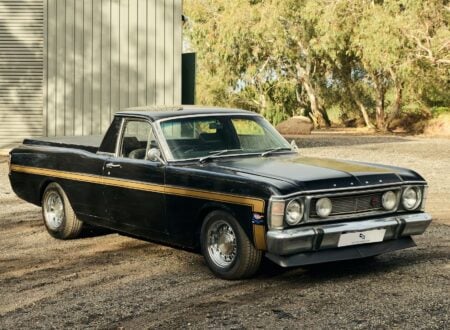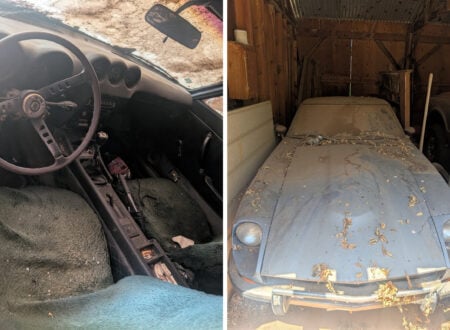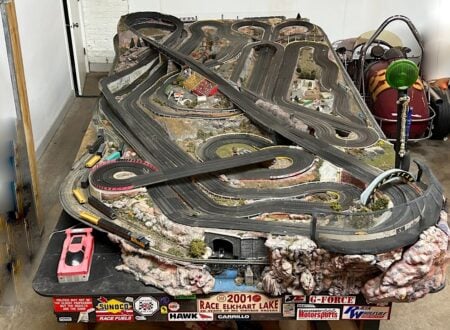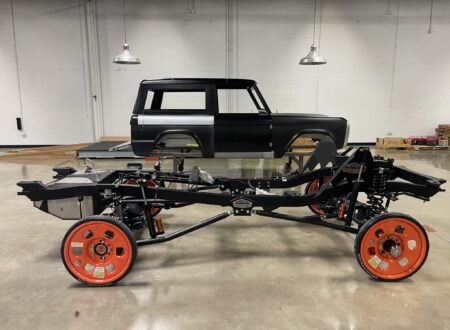This 1971 Porsche 2.2S Targa is said to have been left on the streets of Paris for many years before being moved into a garage where it continued to languish for another two decades.
The car is now being offered for sale with a price guide starting at $27,500 USD and the understanding that it will need a full restoration, and it hasn’t been started or driven in over 20 years.
Fast Facts – The Porsche 911 2.2S
- The Porsche 911 was introduced at the Frankfurt Motor Show as the successor to the Porsche 356. It was originally named the 901, and 82 cars were built with this designation. After a dispute with Peugeot over the use of “0” in the middle of car model numbers, Porsche changed the name to 911.
- Unlike the flat-four in the earlier 356, the 911 was given a more powerful 2.0 liter flat-six, as a result the 911 was quicker than its predecessor and it fast became a successful race and rally car – a tradition the latest 911s carry on to this day.
- Porsche introduced a Targa version of the 911 in 1967. It was widely believed that the the United States Department of Transportation would ban convertibles on safety grounds, and so the Targa top with its integral steel roll bar and removable roof panel was seen as a work around.
- The larger 2.2 liter version of the 911 debuted in 1969 for the 1970 model year, thanks to the larger displacement these cars were more powerful and quicker than the 2.0 models that had come before.
- The 1971 Porsche 911 2.2S shown in this article has a fascinating backstory, it somehow ended up semi-abandoned on the streets of Paris. It was moved into a garage approximately 20 years ago where it remained until today. It’s now being offered for sale needing a full restoration.
The Targa Top: A History Speedrun
In the mid-1960s a rumor was swirling through the automotive world that the the United States Department of Transportation was planning to ban convertibles. For European and British sports car manufacturers, for whom the United States was their biggest market, the news must have seemed borderline apocalyptic.
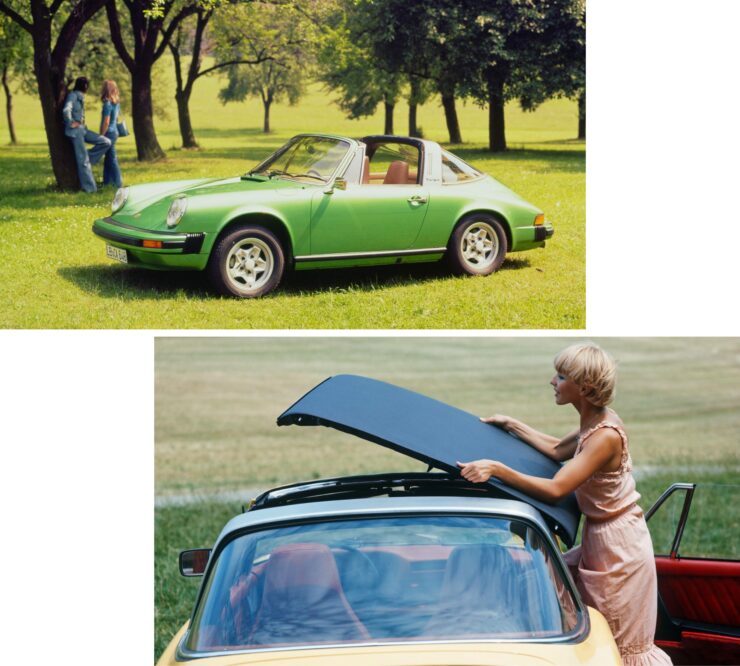

Much of this interest in automotive safety was due to the 1965 book Unsafe at Any Speed by consumer advocate (and later Presidential candidate) Ralph Nader. By 1966 the book was a best seller in the non-fiction genre, and it helped reframe the general view of the American public surrounding automotive safety.
Porsche engineers developed their Targa roof concept in 1965 and applied for the patent. It’s important to note that they didn’t invent the idea, although their name for it has become by far the most widely used.
The first removable roof panel top is credited to automotive designer Giovanni Michelotti and his limited-production Fiat 1200 “Wonderful” by Vignale. In 1961 the Triumph TR4 would debut, also designed by Michelotti, and also featuring a similar roof design. This was followed by the 1964 SAAB Catherina prototype and the 1965 Toyota Sports 800 – all of which debuted before the 911 Targa.
The Porsche marketing department very nearly called the Targa top the “Flori,” as a reference to the Targa Florio road race where Porsche had enjoyed much success over the years.
This was until Head of Domestic Sales Harald Wagner one day asked “Why don‘t we just call it Targa?” The name stuck and a year later in 1966 the Porsche 911 Targa became a fully-fledged model alongside the standard 911 coupe.
Funnily enough it was only discovered later that “targa” means “plate” (or placard) in Italian, often used as in “license plate” for a car. By this time it was too late to change the name, and it remains in use today.
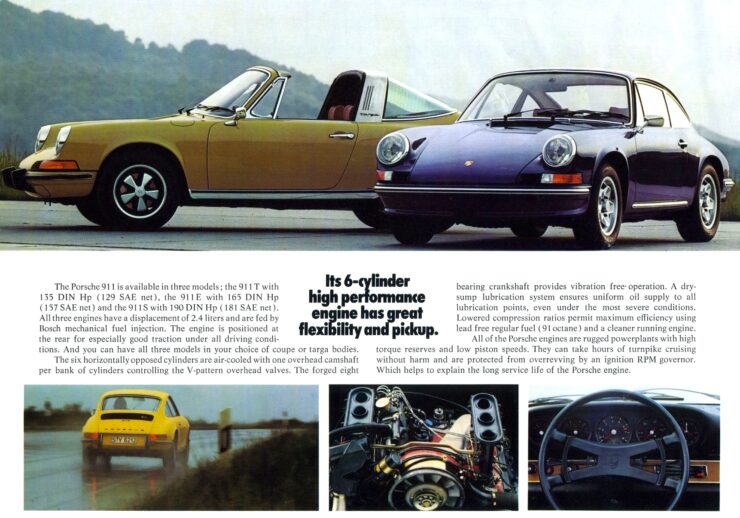

Although there is still a Porsche 911 Targa in production today, the concept has largely fallen by the wayside with other manufacturers with most cars now being either full hardtop coupes or hard/soft top convertibles.
The 1971 Porsche 2.2S Targa Shown Here
The story behind this car is a little unusual, in the 1990s it found itself living a hard life on the streets of Paris where it remained for many years – exposed to the weather but fortunately not the protesters who occasionally set cars on fire to make a point.
In the early 2000s the car was moved into a parking garage and this is where it has remained ever since. It hasn’t been run since the year 2000 and it’s clear from looking at the images that the car will require a full restoration to get it back into useable, driving condition.
It’s still finished in its original color of Signal Orange over a black interior, it has dual spotlights up front, yellow tinted headlights, and it rides on Fuchs wheels. Unfortunately, the original engine is now long gone, the car is powered by a 1970 911 E 2.2 Sportmatic flat-six, though it does appear to retain its original 5-speed gearbox.
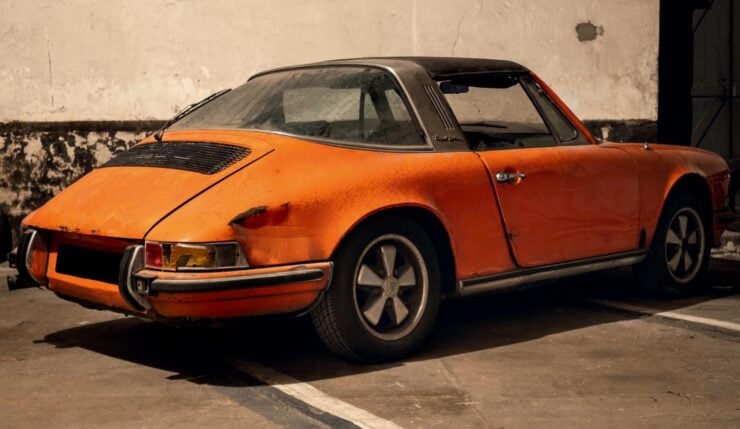

Due to the lack of a matching-numbers engine the car will have less value in the eyes of collectors, however 911s like this are often sought after by those looking to complete Outlaw conversions which often include larger and more powerful engines from later 911s.
The car is now being offered for sale out of Espace Champerret in Paris with a price guide of €25,000 – €35,000 which works out too approximately $27,500 – $37,400 USD. If you’d like to read more about it or register to bid you can visit the listing here.
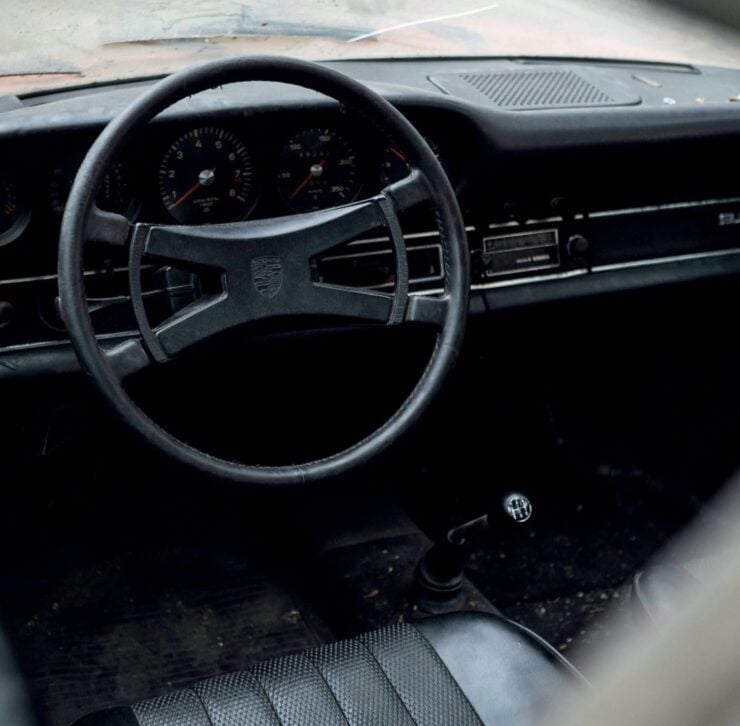
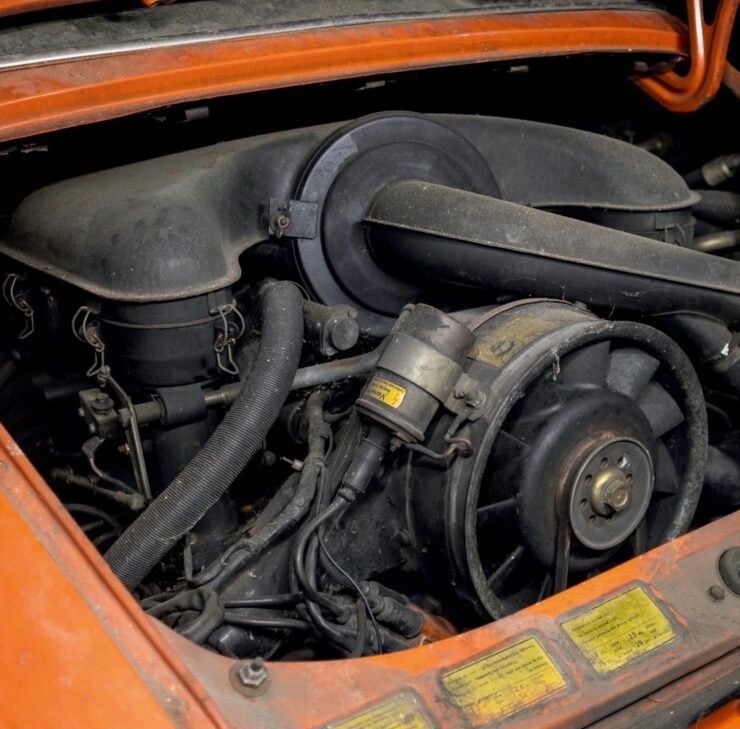

Images courtesy of Artcurial




